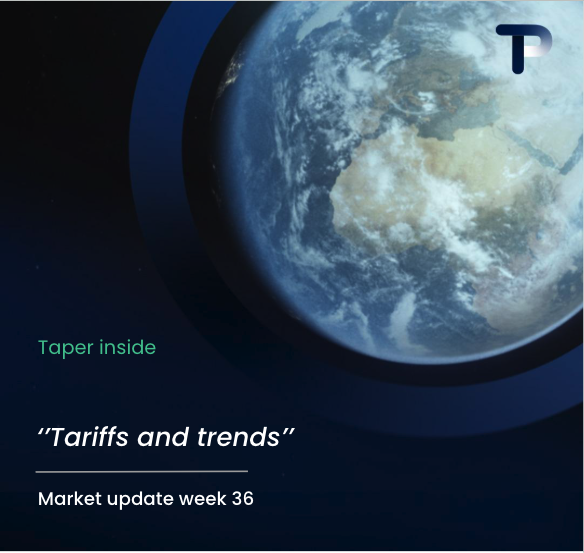Trade finance is vital for SME growth because it provides the financial tools and risk mitigation necessary for small businesses to engage in international trade safely and effectively. It bridges cash flow gaps between order fulfilment and payment receipt, enables market expansion through working capital solutions, and offers protection against commercial and political risks. This support allows SMEs to compete globally whilst maintaining healthy cash flow and building stronger supplier relationships.
What is trade finance and how does it work for SMEs?
Trade finance encompasses a range of financial instruments and services specifically designed to facilitate international trade transactions. For SMEs, these tools provide the necessary funding and risk management to engage confidently in global commerce.
Letters of credit represent one of the most fundamental trade finance mechanisms for small businesses. When you’re importing goods, a letter of credit acts as a guarantee from your bank to the supplier, ensuring payment upon delivery of goods that meet specified conditions. This arrangement protects both parties whilst providing suppliers with payment assurance and buyers with delivery guarantees.
Documentary collections offer a more cost-effective alternative for established trading relationships. Your bank handles the collection of payment from international buyers against shipping documents, reducing administrative burden whilst maintaining some level of security. This method works particularly well when you’ve built trust with overseas customers but still require formal payment procedures.
Trade credit insurance protects your business against the risk of non-payment by international buyers. For SMEs venturing into new markets or working with unfamiliar customers, this coverage provides confidence to extend credit terms whilst safeguarding cash flow. The insurance typically covers both commercial risks, such as buyer insolvency, and political risks including currency restrictions or war.
Working capital facilities specifically designed for trade finance help bridge the gap between order placement and payment receipt. These solutions recognise that international transactions often involve extended payment terms, and your business needs funding to maintain operations during these periods.
How does trade finance help SMEs overcome cash flow challenges?
Trade finance directly addresses the timing mismatches that create cash flow pressures in international business. By providing funding solutions that align with your trade cycle, these instruments ensure you can maintain operations whilst waiting for customer payments.
Invoice financing against international receivables allows you to access funds immediately after shipping goods, rather than waiting for payment terms to expire. This approach transforms your outstanding invoices into working capital, enabling you to fulfil new orders, pay suppliers, and cover operational expenses without delay.
Pre-shipment financing helps you fund inventory purchases and production costs before goods are delivered to international customers. This facility recognises that you often need to invest significantly in stock or manufacturing before receiving any payment, particularly when dealing with large orders or seasonal demand patterns.
Seasonal businesses benefit enormously from trade finance solutions that accommodate fluctuating cash flow patterns. Whether you’re importing goods for peak selling seasons or exporting products with cyclical demand, these facilities provide the flexibility to manage inventory and production costs throughout the year.
Multi-currency accounts complement traditional trade finance by streamlining international payments processes. Rather than maintaining multiple foreign bank accounts, you can receive payments in various currencies through a single platform, reducing banking costs and administrative complexity whilst improving cash flow visibility.
What are the key benefits of trade finance for small business growth?
Trade finance unlocks international market opportunities that would otherwise remain inaccessible to resource-constrained SMEs. By providing the financial backing and risk management tools necessary for global trade, these solutions enable ambitious small businesses to compete on an international scale.
Market expansion becomes achievable when you have access to appropriate financing and risk mitigation tools. Trade finance enables you to take on larger orders, enter new geographical markets, and work with unfamiliar customers whilst maintaining financial stability. This support is particularly valuable when establishing your presence in emerging markets where payment risks may be higher.
Supplier relationships strengthen significantly when you can offer secure payment methods and maintain consistent ordering patterns. Letters of credit and other trade finance instruments demonstrate your creditworthiness to international suppliers, often resulting in better pricing, priority treatment, and improved payment terms.
Competitive positioning improves markedly when you can offer flexible payment terms to international customers whilst maintaining your own cash flow. Trade finance enables you to compete with larger companies by providing similar payment flexibility without compromising your financial stability.
Risk mitigation through trade finance instruments protects your business from the various uncertainties inherent in international trade. From currency fluctuations to political instability and customer default, these tools provide comprehensive protection that allows you to pursue growth opportunities with confidence.
| Trade Finance Solution | Primary Benefit | Best Suited For |
|---|---|---|
| Letters of Credit | Payment guarantee and risk mitigation | New supplier relationships and high-value transactions |
| Invoice Financing | Immediate cash flow from outstanding receivables | Businesses with extended payment terms |
| Trade Credit Insurance | Protection against buyer default | Companies expanding into new markets |
| Pre-shipment Financing | Working capital for inventory and production | Manufacturers and traders with large orders |
The combination of improved cash flow management, reduced transaction risks, and enhanced competitive capabilities positions SMEs for sustainable international growth. Rather than limiting your ambitions to domestic markets due to financial constraints, trade finance provides the foundation for global expansion.
For SMEs engaged in international trade, particularly those managing complex multi-currency transactions, partnering with a specialist financial services provider can streamline access to these vital trade finance solutions. We at TaperPay understand the unique challenges facing internationally active small businesses and provide tailored solutions that support your growth ambitions whilst simplifying the complexities of global trade finance.
Frequently Asked Questions
How much does trade finance typically cost for SMEs, and what factors affect pricing?
Trade finance costs vary significantly based on the instrument used, transaction size, and risk profile. Letters of credit typically cost 0.1-2% of the transaction value, while invoice financing ranges from 1-3% monthly. Factors affecting pricing include your credit rating, the countries involved, transaction history, and the specific risks associated with your trade partners.
What documentation do I need to apply for trade finance facilities?
Most providers require recent financial statements, trade references, details of your international customers and suppliers, and evidence of existing trade activity. You'll also need to provide information about your business model, typical transaction sizes, and the countries you trade with. Having organized documentation of past international transactions can significantly speed up the approval process.
Can I use multiple trade finance solutions simultaneously for different transactions?
Yes, most SMEs benefit from using a combination of trade finance tools tailored to different situations. For example, you might use letters of credit for new suppliers, invoice financing for established customers with extended payment terms, and trade credit insurance for higher-risk markets. This diversified approach provides optimal coverage and cost-effectiveness across your trade portfolio.
What happens if my international customer defaults on payment despite having trade finance protection?
If you have trade credit insurance, the insurer will typically cover 80-90% of the loss after a waiting period (usually 90-180 days). For letters of credit, payment is guaranteed provided you meet all documentary requirements. The key is ensuring you comply with all terms and conditions, maintain proper documentation, and report potential issues early to your finance provider.
How long does it take to set up trade finance facilities, and can I get emergency funding for urgent orders?
Initial setup typically takes 2-4 weeks for comprehensive facilities, including credit assessment and documentation. However, many providers offer expedited services for urgent transactions, sometimes within 24-48 hours for existing customers. It's advisable to establish facilities before you need them, as emergency funding often comes with higher costs and limited options.
Are there minimum transaction sizes or business turnover requirements for accessing trade finance?
Requirements vary by provider and instrument type. Some traditional banks require minimum annual turnovers of £500K-£1M, while specialist trade finance providers often work with smaller businesses from £100K turnover. Individual transaction minimums can range from £10K to £100K depending on the solution. Fintech providers increasingly offer more accessible options for smaller SMEs.
How do I choose between different trade finance providers, and what should I look for beyond cost?
Consider factors beyond pricing: speed of decision-making, geographical coverage, digital platform capabilities, customer service quality, and flexibility in structuring solutions. Look for providers with experience in your industry and target markets, strong relationships with correspondent banks, and technology that integrates with your existing systems. Personal relationship management and responsiveness during critical transactions are often more valuable than marginally lower costs.
Hi there! 👋 I see you're reading about multi-currency IBAN accounts for supply chain payments. Smart choice - these accounts can save businesses 2-4% on every international transaction!
What best describes your current situation with international supplier payments?
Which of these challenges are you currently facing with international payments? (Select all that apply)
What's driving your interest in multi-currency payment solutions? Tell us about your business goals or challenges.
Great! To help us understand your specific needs better, could you share more details about your international payment volume or any particular requirements?
Perfect! Let's connect you with one of our international payments specialists who can show you exactly how Taper's multi-currency IBAN accounts can save you money and streamline your supply chain payments.



